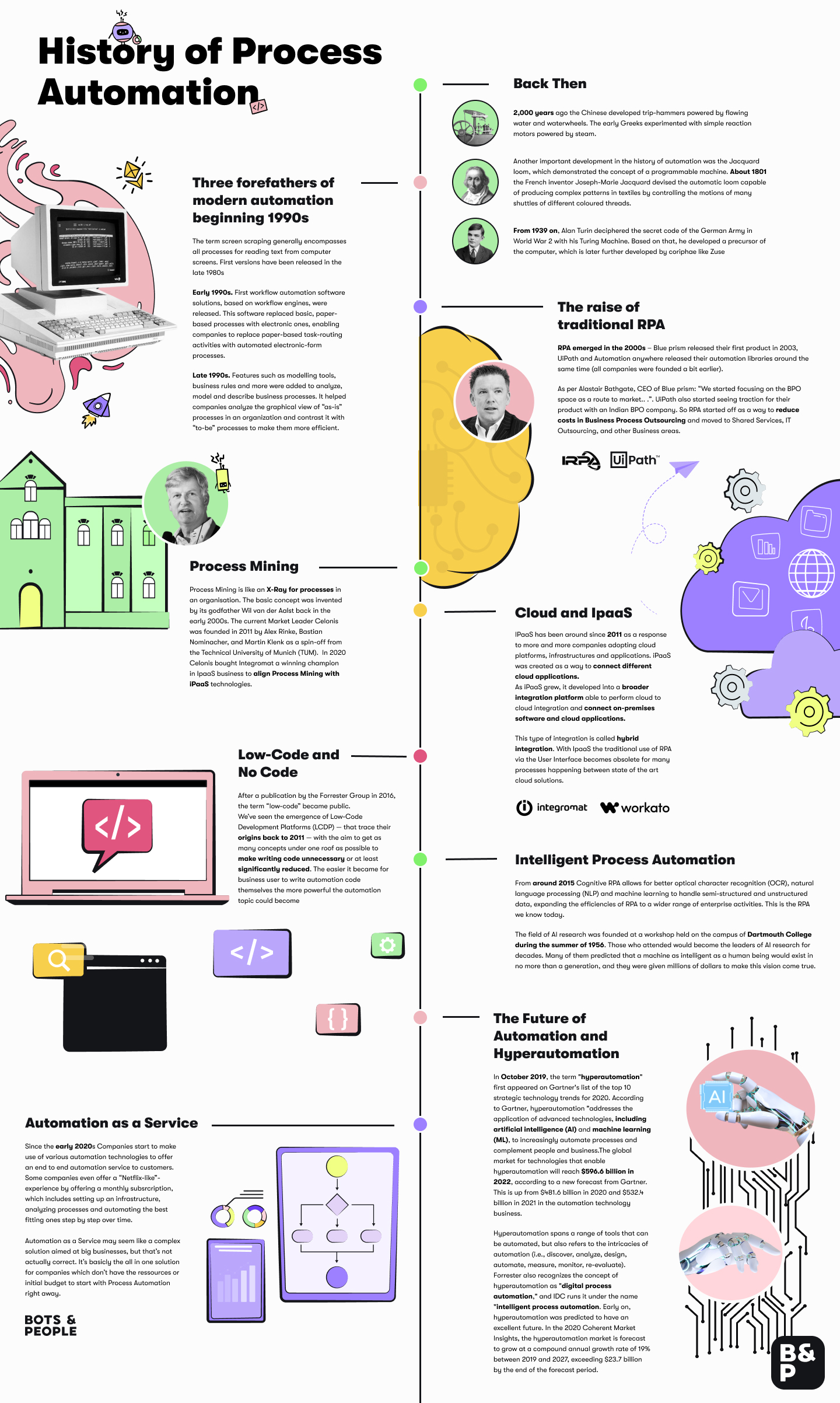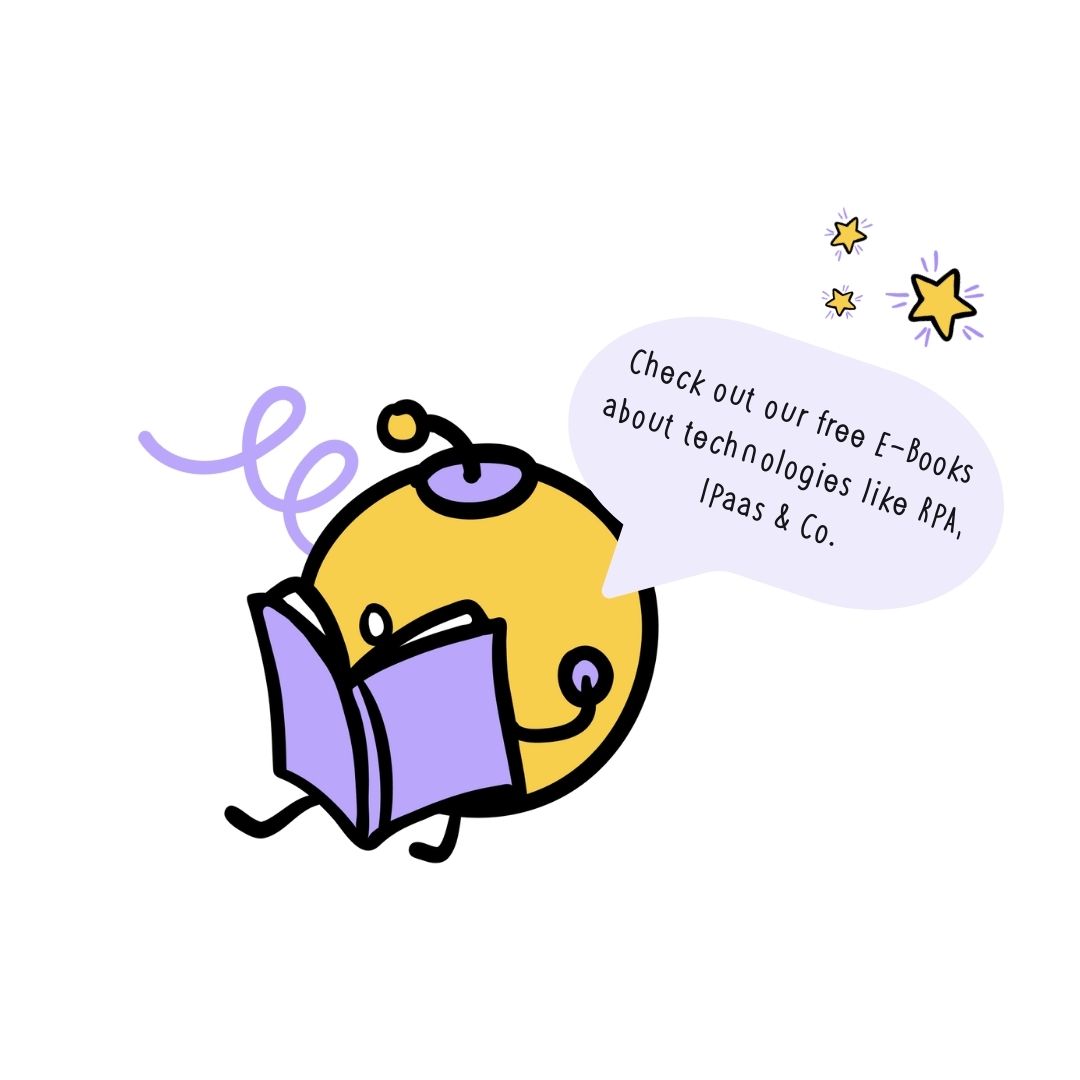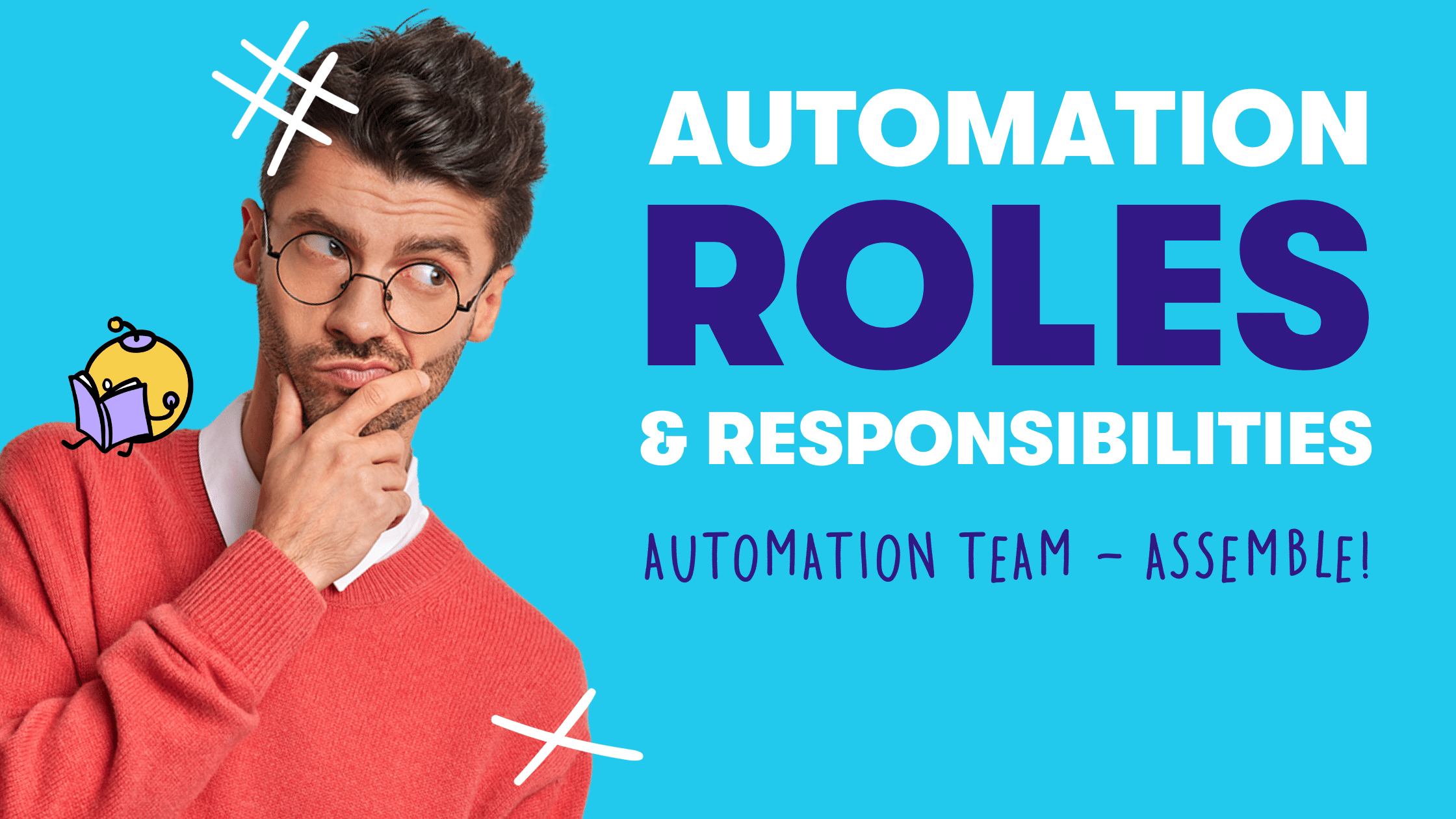From the invention of the wheel to Hyperautomation — we’ve come a long way. Does that mean we’ve reached the end of the journey? Is this the pinnacle of automation?
Absolutely not. In fact, the more we automate and research automation opportunities, the more new automation trends and technologies arise -and the more exciting the journey becomes!
The world of automation is still full of wonders. We need to travel a long road that leads to humans achieving their maximum potential by letting them focus on creative and innovative tasks while automating all tedious and repetitive tasks.
Let’s explore how automation trends and technologies will change and evolve in the future and what we could expect from it. But before starting with the future of automation, have a look on the history of automation.

That was a nice excursion into the past. Now let's move on to the future and its automation trends!
#1 of Automation Trends: The Complete Absence of Technology Fragmentation

Many businesses, huge ones, are using an array of applications that are built with entirely different technologies. Sometimes, we need these to work in unison, and technologies such as IPaaS, RPA, and AI can help us connect them and automate processes. Still, we haven’t managed to solve this issue altogether, and human intervention is required from time to time.
The good news is that we’re moving toward eradicating technology fragmentation. Soon, we’ll be able to connect any two or more apps and automate the business process that involves them, no matter how complex they are.
#2 of Automation Trends: The Virtual Assembly Line to Further Facilitate Digital Work
What does your digital work look like now? Even though your essential job takes up most of the time, you’ll still spend some time filling out reports, setting up apps required for your job, and preparing anything else you need before actually working. Sometimes, all these side tasks are boring, and you might find them unnecessary.
However, automation technologies can already help us eliminate most of these tasks and let robots take care of them. Virtual assembly line means having all tasks prepared for you so that you can just turn on your device and have all tasks prepared for you. That way, you can focus on the essential part of your work and give your maximum without spending unnecessary energy on irrelevant tasks.
Virtual assembly lines are already a reality, but they will be further refined soon.
#3 of Automation Trends: Low Code and No Code Will Become a Standard
There are already plenty of low code services across industries that tech people commonly use to speed up the app-building process. In automation, low code platforms enable automating processes using drag-and-drop interfaces and only inserting code for more complex operations. These services will become even more popular in the future.
In fact, many apps in automation aim to achieve no code. Although they already exist, they are only available for simpler automation operations. Automating complex processes still requires having a coder in your team. But no code apps are bound to become even more popular in the future, leading to the rise of “Citizen Developers,” non-technical workers who will be able to make apps and utilize complex automation strategies. Gartner Inc’s June 2021 Press Release states that non-tech people will create 80% of tech products and services.
This will effectively put automation in the hands of people who know an organization’s processes the best — the business department. With no code tools, they will be able to make quick adjustments with minimum to no help from the IT sector.
Does no code mean the demand for software developers will increase in the future? Of course not. On the contrary, the IT team will be able to concentrate on more relevant and complex issues rather than writing thousands of monotonous lines of code. More importantly, the IT department won’t have to waste its time helping out business departments and can focus on what’s relevant.
#4 of Automation Trends: Greener and More Sustainable Businesses
Sustainability has been one of the most important keywords of the decade, as governments worldwide increase their requirements for businesses to battle bad impacts on the environment. We’ve reached that age as humanity where we need to pay attention to the world around us more than ever.
Because of that, the Environmental Social Governance (ESG) performance of a business will become one of the key factors that investors will take into account in the future when deciding whether to invest. Companies must disclose their activities related to the environment and are expected to go a step further than just being compliant with guidelines. They need to show that they are working on greener initiatives and have detailed sustainability strategies.
But what does it have to do with automation? Well, many processes that consume a lot of energy and are not eco-friendly can be cut down thanks to automation, leading to greener and more sustainable business operations. For instance, we still need to print a paper for some uses, but by digitizing all paper documents and using automation to process them, we can help with deforestation.
#5 of Automation Trends: Even More Rapid Development of Automation Technologies, with the Main Focus on AI
Automation is being explored and developed by some of the brightest minds in the world, and we can only expect it to get better in the future, along with all related technologies. For example, artificial intelligence is one of the fields which is being researched a lot, and more intelligent AI could contribute to automation even more. This also applies to other separate areas, including IPaaS, RPA, and more.
At the moment, AI produces around 1% of all data nowadays, and, according to Gartner, this figure will reach 10% by 2025, meaning AI will become even more powerful in years to come. Moreover, AI engineering will become more prominent, a practice connecting human needs with AI systems to create real-world solutions. AI engineers will continue developing tools, systems, and processes that will make AI applications in the real-world even better.
Another massive AI-related shift expected to happen is AI reaching end devices. Currently, AI is mainly on the cloud and in the backend, doing all the computing. However, it is expected to become available via sensors, computing chips, processors, and more. That way, data won’t have to travel all the way to the cloud to be collected, stored, and analysed — it’s all performed locally. This will reduce overall latency and make data processing even faster. Such an approach, dubbed AI Edge, will definitely find its way into automation.
#6 of Automation Trends: Fully-Automated Companies

A fully-automated company is an organization where all processes that can be automated are automated and require minimal to no human intervention. We already have fully-automated companies, but they still feature a lot of repetitive work that needs to be conducted by humans.
Therefore, it’s safe to say that a fully-automated company actually only exists in theory but is likely to become a reality in the near future. In such a company, humans will play an even more critical role, as they will have a chance to focus on more creative tasks rather than waste time doing boring work.
Final Thoughts
We listed just some of the automation trends and technologies we think will become more relevant in the future. However, we believe automation can take us everywhere, really, and we wouldn’t be surprised if we see it in use with many other interesting and modern technologies, such as blockchain. All we know is that there’s an exciting journey ahead of us, and we’re looking forward to it!









